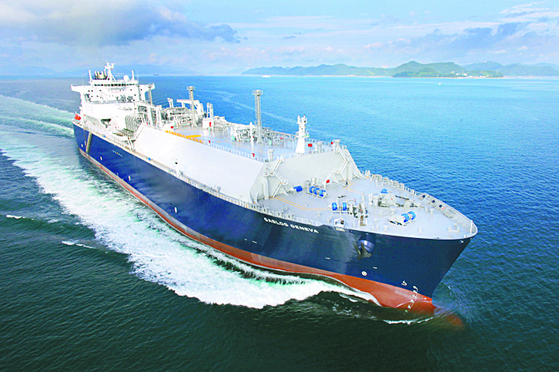![An LNG carrier built by Samsung Heavy Industries. [사진 삼성중공업]](https://i0.wp.com/pds.joins.com/news/component/htmlphoto_mmdata/202101/12/c5dadecb-e3dd-4b44-b3c4-11379511cb37.jpg?w=560&ssl=1)
An LNG carrier built by Samsung Heavy Industries. [사진 삼성중공업]
Korea achieved first place in global ship orders last year, and regained its position as the head of the line that was lost to China in 2019. According to Clarkson Research, a global shipbuilding and shipping analysis company on the 12th, of the 19.24 million CGT (standard cargo ship equivalent) last year, Korea won an order of 8.19 million CGT (187 ships), surpassing China, ranking first in the world.
Korea’s global market share was 43%, the highest in the last 10 years. China followed with 7.37 million CGT, followed by Japan with 1.37 million CGT (7%). Last year, global ship orders decreased by 33.9% from 2019 due to the aftermath of a novel coronavirus infection (Corona 19), but it can be interpreted that only Korea has saved.
Korea’s recapture of No. 1 was largely driven by explosive orders at the end of the year. Last month, the Korean shipbuilding industry, including the Big 3 (Hyundai Heavy Industries Group, Daewoo Shipbuilding & Marine Engineering, and Samsung Heavy Industries), swept 2.85 million CGT, which is 73% of global orders. On the other hand, during the same period, China was only a third of Korea.
By ship type, liquefied natural gas (LNG) carriers and ultra-large crude oil carriers (VLCC) led the performance. Korea won orders for 36 out of 49 large LNG carriers (over 140,000㎥) ordered by global shipping companies last year, and 35 out of 41 VLCCs. It also diversified ship types by winning orders for 18 out of 28 Suezmax-class crude oil carriers.

A super-large crude oil carrier built by Hyundai Heavy Industries. Photo Korea Shipbuilding & Marine Engineering
The order performance is continuing at the beginning of the year. In this month alone, Korea Shipbuilding & Marine Engineering won orders worth 1,265 million dollars (about 1.4 trillion won) for a total of 11 vessels including 6 container ships. The line price went down. As of the end of last year, the unit price per vessel of VLCC was $85 million (approximately 93 billion won), a 7.6% decrease from a year ago, and containerships during the same period fell 6.4% to $102 million (approximately 110 billion won). On the other hand, the LNG carrier was the same at $186 million (about 205 billion won).
The industry predicts that this year, the Korean shipbuilding industry will be able to revive from the drought of orders that fell to the bottom last year. First, it is expected that the Qatar project, the largest of all LNG projects, will sign a main contract in the first half of the year. Jin-myung Choi, a researcher at NH Investment & Securities, said, “It is expected that Qatar will proceed with a main contract with an initial volume of 40 to 60 vessels in the first half,” and “In the second half, orders for container and tanker ships will increase.” Earlier last year, Big 3 shipbuilders signed a’slot contract’ (to secure a dock before the main contract) for an LNG carrier with a Qatar state-owned company.
The key factor is the merger between Hyundai Heavy Industries Group’s shipbuilding holding company Korea Shipbuilding & Marine Engineering and Daewoo Shipbuilding & Marine Engineering. If the merger between the two companies is successful, Korea can further enhance the technology competitiveness of LNG carriers. Approval from EU and Japanese regulatory authorities, including Korea, remains. China, Singapore and Kazakhstan have approved the merger of the two companies.
Reporter Kim Young-joo [email protected]
